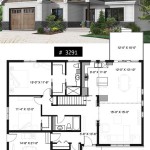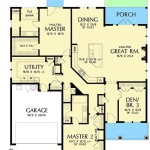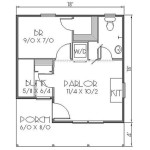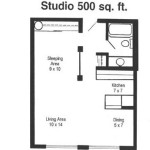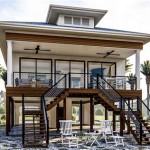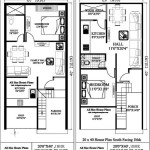Eco-Friendly Home Floor Plans: Designing for Sustainability and Comfort
In today's environmentally conscious world, building homes that prioritize sustainability and energy efficiency has become increasingly important. Architects and designers are embracing eco-friendly home floor plans that not only reduce environmental impact but also enhance the overall health and well-being of occupants.
Maximizing Natural Light and Ventilation
One key aspect of eco-friendly design is maximizing natural light and ventilation. Floor plans that incorporate large windows, skylights, and open spaces allow ample daylight to enter the home, reducing the need for artificial lighting and lowering energy consumption. Proper ventilation is also essential for maintaining a healthy indoor environment, allowing fresh air to circulate and reducing the accumulation of pollutants.
Energy-Efficient Building Materials
The choice of building materials plays a crucial role in reducing a home's environmental footprint. Eco-friendly homes utilize sustainable materials such as recycled steel, bamboo, cork, and low-VOC (volatile organic compound) paints and finishes. These materials minimize the release of harmful chemicals into the environment and contribute to improved indoor air quality.
Passive Solar Design
Passive solar design is a technique that harnesses the sun's energy for heating and cooling purposes. Floor plans that incorporate south-facing windows, thermal mass (e.g., concrete or stone), and proper insulation allow the home to absorb and store solar heat during the day and release it gradually at night. This reduces the reliance on conventional heating and cooling systems.
Efficient Water Usage
Water conservation is another important aspect of eco-friendly home design. Low-flow faucets, toilets, and showerheads reduce water usage significantly. Rainwater harvesting systems can supplement household water supply and reduce reliance on municipal water sources. Additionally, drought-tolerant landscaping reduces the need for irrigation.
Waste Management and Recycling
Floor plans that incorporate dedicated recycling areas and composting facilities promote waste reduction and responsible waste management. Composting organic waste reduces methane emissions associated with landfills and provides nutrient-rich soil for gardening. Recycling programs help divert materials from landfills, reducing the environmental impact of waste disposal.
Smart Home Technology
Smart home technology can enhance the energy efficiency and sustainability of eco-friendly homes. Programmable thermostats, motion-activated lighting, and remote energy monitoring systems allow homeowners to control their energy consumption and reduce waste. Smart appliances with energy-saving features further contribute to a more sustainable lifestyle.
Conclusion
Eco-friendly home floor plans go beyond aesthetics and functionality, offering numerous environmental and health benefits. By incorporating sustainable design principles, architects and homeowners can create homes that minimize environmental impact, promote occupant well-being, and reduce energy consumption. As the demand for eco-friendly homes continues to grow, these floor plans will play a vital role in shaping a more sustainable and healthy built environment.

Eco Friendly Home Plans House Design

Beautiful Eco Friendly Home Plans 2 House Designs Cottage Style Craftsman

Seco Homes Your Eco Friendly Home Builder For Energy Efficient

Eco Sustainable House Djuric Tardio Architectes Archdaily

Eco Friendly Single Floor Kerala Villa House Plans Courtyard Design

Sustainable Living House Plan 33035zrx Architectural Designs Plans
Ecogeneration Luxury Sustainable Modular Homes Ecoliv

House Plans Archives Page 2 Of 3 Seco Homes Your Eco Friendly Energy Efficient Home Builder

Eco House Plans Friendly Design Narrow

Floor Plan Of The First Level Eco Friendly House Decoist Sustainable Home Design

